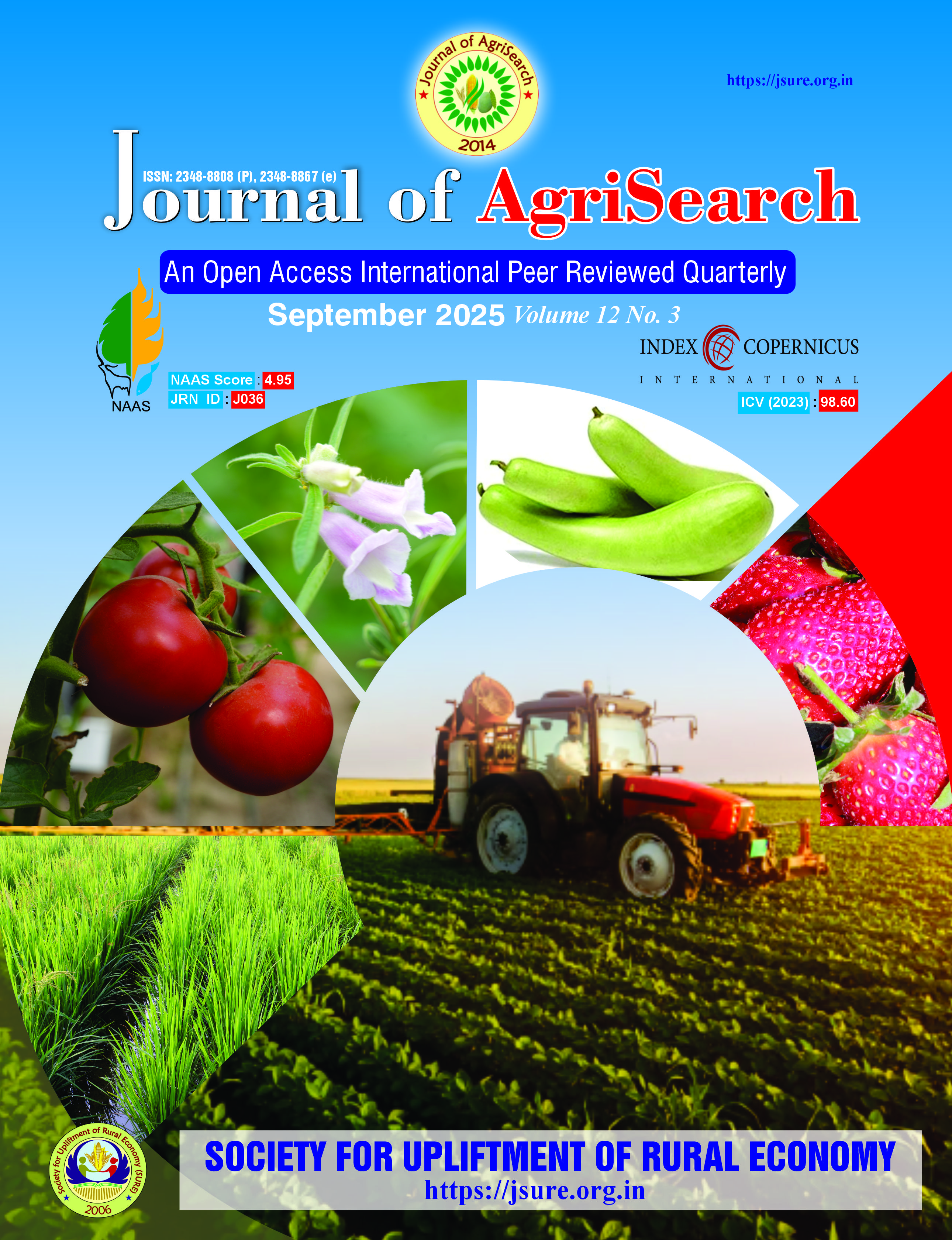Empowering tribal women of Jharkhand: A replicable lac-based socio-economic model
Lac-based empowerment of tribal women
DOI:
https://doi.org/10.21921/jas.v12i03.15249Keywords:
Socio-economic development, Lac-based model, Skill development, Tribal empowerment, JharkhandAbstract
This study explores the implementation of a lac-based socio-economic development model aimed at empowering tribal women in Jharkhand's Khunti district. Over three consecutive years, beginning in 2020, interventions such as the introduction of drought-tolerant paddy and ragi varieties, alongside scientific lac cultivation practices, were introduced. These efforts were coupled with skill development training for lac-based handicraft production, targeting income generation during off-hours. The adoption of improved paddy and ragi varieties resulted in output increases of 1.4 and 1.6 times, respectively, compared to traditional practices. Scientific lac cultivation yielded a productivity increase to 3.2 times versus 1.2 times in conventional methods. These findings suggest that equipping tribal women with knowledge, skills, financial support, and market linkages can catalyze rural transformation and sustainable development.
References
Census of India. 2011. Census Data on Population by Religious Communities and their Percentage. Retrieved from http://www.censusindia.gov.in/2011census/C-series/C-01.html
Gope B and Singh N P. 2017. Lac cultivation: A sustainable livelihood option for the tribal farmers in Khunti district of Jharkhand. Indian Journal of Natural Products and Resources 8(1): 33-39.
Kumar P, Mishra D, Kumar V and Singh R P. 2019. Assessment of paddy productivity and profitability under different cultivation practices in Khunti district of Jharkhand, India. Journal of Pharmacognosy and Phytochemistry 8(2): 2060-2065.
Mukhopadhyay A. 2019. Tribal Development in India: Issues and Challenges. International Journal of Social Science and Economic Research 4(7): 5164-5175.
Nayak D, Mohanty S and Pattanaik M. 2016. Lac cultivation: A potential source of livelihood for tribal communities in Jharkhand. Journal of AgriSearch 3(1): 18-22.
Pal G, Prasad N, Ghosal S, Pandey S K and Kumar M. 2013. Socio-economic Profile of lac growers in Ranchi and Khunti District of Jharkhand. Journal of Rural Agricultural Research 13(2):1-5.
Singh A K, Kumar V and Kumar S. 2017. Status, challenges and opportunities of paddy cultivation in Khunti district, Jharkhand. International Journal of Agriculture, Environment and Biotechnology, 10(1): 37-43.
Yogi R K, Kumar N and Sharma K K. 2021. Lac, Plant Resins and Gums Statistics 2020: At a Glance, ICAR-IINRG, Ranchi. Bulletin (Technical) no. 2/2022, 1-102.
Downloads
Published
Issue
Section
License
Copyright (c) 2025 Jyotirmoy Ghosh, Pradosh Kumar Paramguru, Rahul R Bakade, Nirmal Kumar

This work is licensed under a Creative Commons Attribution-NonCommercial-NoDerivatives 4.0 International License.
Publisher and Authors

